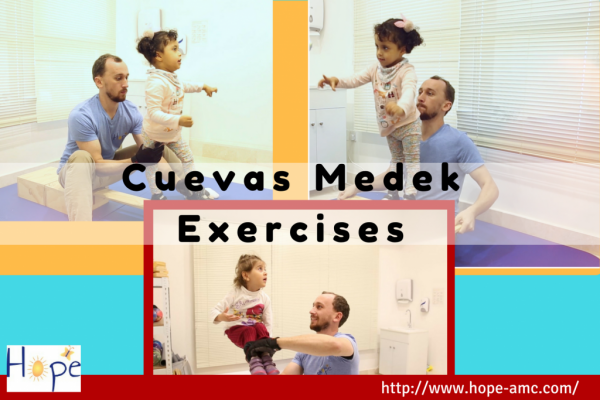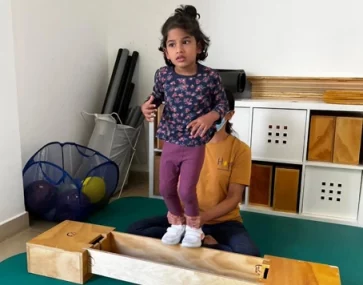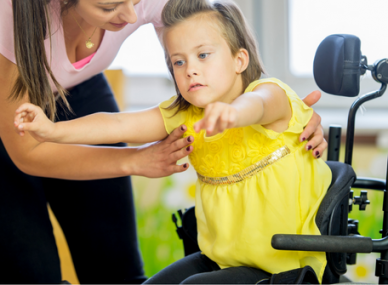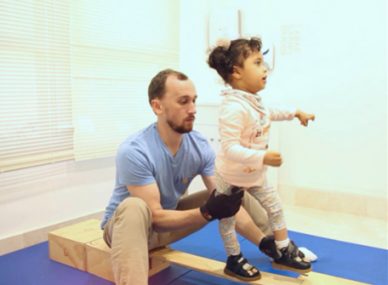How Cuevas Medek Exercises (CME) Helps in Pediatric Rehabilitation?
Is your child facing any form of gross motor delay? Is he/she acting in a non-coordinated manner? Does your child bump into things continuously, fall frequently and hard, etc.? If yes, then your child can get a considerable amount of benefit when undergoing CME therapy. The Cuevas Medek Exercises will not only benefit you physically but mentally as well.
CME, the acronym of Cuevas Medek Exercise is a form of physical therapy approach that aims to help infants and toddlers suffering from abnormal developmental motor evolution caused by a known or unknown non-degenerative condition affecting the Central Nervous System. CME therapy can be applied to children from the age of three months until they achieve and control independent walking. The fundamental assumption of this therapy is that developmentally compromised infants or toddlers need to reinforce their natural recovery potential. This feature of the central nervous system continues to propel the development process within your child even after the sequelae are established. But, the natural reaction or the ‘recovery potential’ is there. So, it is important to begin with the motor therapy at the same time while the first signs of a delayed motor function appear.
The CME physical therapy aims to help your child learn to successfully and independently perform gross motor skills and functional mobility skills. As a child begins to successfully develop these skills, it creates a greater form of independence, which helps contribute to achieving a higher sense of self-esteem.
You are probably asking yourself what are the foremost benefits that come with pediatric CME physical therapy? To help you, below are some essential benefits of CME therapy are mentioned.
Things to Improve in Your Child With CME Therapy
- Strength – CME helps to improve the strength of your child against gravity
- Balance – CME therapy helps to improve your child’s ability to maintain balance
- Range of Motion – Improves how far a joint can bend or straighten
- Reflexes – Improved Automatic responses in children (Palmar grasp, asymmetrical tonic neck, labyrinthine, positive support, etc.
- Tone – Natural resistance in a muscle
Different Aspects of CME Physical Therapy to Consider
- Cuevas Medek Exercises (CME) for Moderate Gross Motor Delays
A child with gross motor delays can get large benefit with Cuevas Medek Exercises (CME). A moderate gross motor delay generally involves some noticeable atypical muscle tone problems that exhibit an increased or decreased flexibility and slowly maturing motor skills. Children with problems of autistic spectrum disorder, down syndrome, etc., typically fit to this category. Gross motor delays usually occur due to muscle tone or flexibility issues. CME therapy helps to stimulate the complex and sophisticated postural righting responses. As postural reflexes are stimulated, the child’s preferred motor patterns spontaneously improve. In this way, the compensations occurring the gross motor delay within the child get replaced by skilled movement. The child with moderate gross motor delays then instinctively makes more sophisticated movement choices. Slowly, the dependence on CME physical therapy services diminishes and then the child can then often be discharged from therapy entirely.
CME therapy for children with moderate gross motor delays has been proven to offer positive results. There can’t be a better Neurorehabilitation technique than this for pediatric gross motor delays.
- Cuevas Medek Exercises (CME) for Severe Gross Motor Delays
Treating a profoundly delayed child can sometimes pose to be extremely challenging. These children may be medically fragile and/or unable to follow directions. The traditional physical therapy sessions are often passive with the child being stretched, rolled about, placed in an adaptive swing or stander, or bounced on a therapy ball.
While on the other hand, the CME physical therapy targets the body’s reflexes, specifically postural righting and recovery reflexes. These reflexes help you stay upright when you slip on ice, miss your last step, or stumble over an unseen obstacle. On repeatedly triggering, postural righting reflexes, a child even with the most medically complex conditions improves with sitting balance, head and trunk righting, and overall mobility.
In case, you want to know more about how Cuevas Medek Exercises can help, contact our CME therapists at Hope Abilitation Medical Center. They will help you with all the information.
- Cuevas Medek Exercises (CME) for the ‘the non-coordinated Child’
Cuevas Medek Exercises (CME) are specifically designed to stimulate the body’s postural reflexes. A clumsy child can very much get benefited with this therapy practice. Undergoing CME therapy will help the child to improve reflexive responses and stimulate improvement in the child’s overall gross motor performance, sometimes to an astounding degree.
Get to know the detailed process of evaluation and treatment of a non-coordinated child with Cuevas Medek Exercises by speaking to our therapists at Hope Abilitation Medical Center. At Hope AMC, you will expert CME therapy assistance for all kinds of pediatric conditions. To get more detailed information about CME therapy offered at Hope AMC, visit hope-amc.com







4 Comments
Dr Maha
I am really happy about your result with teya I am interested in your way of because really cerebellar disorders are very difficult to treat in pediatrics I am a physiatrist so I hope If Possible to have your contacts and if to send me more about your method of therapy and your results with patients
ปั้มไลค์
Like!! Great article post.Really thank you! Really Cool.
Donny Laminator
I really like it when people get together and share thoughts. Great blog, keep it up!
Trey
I love your blog. It looks every informative.